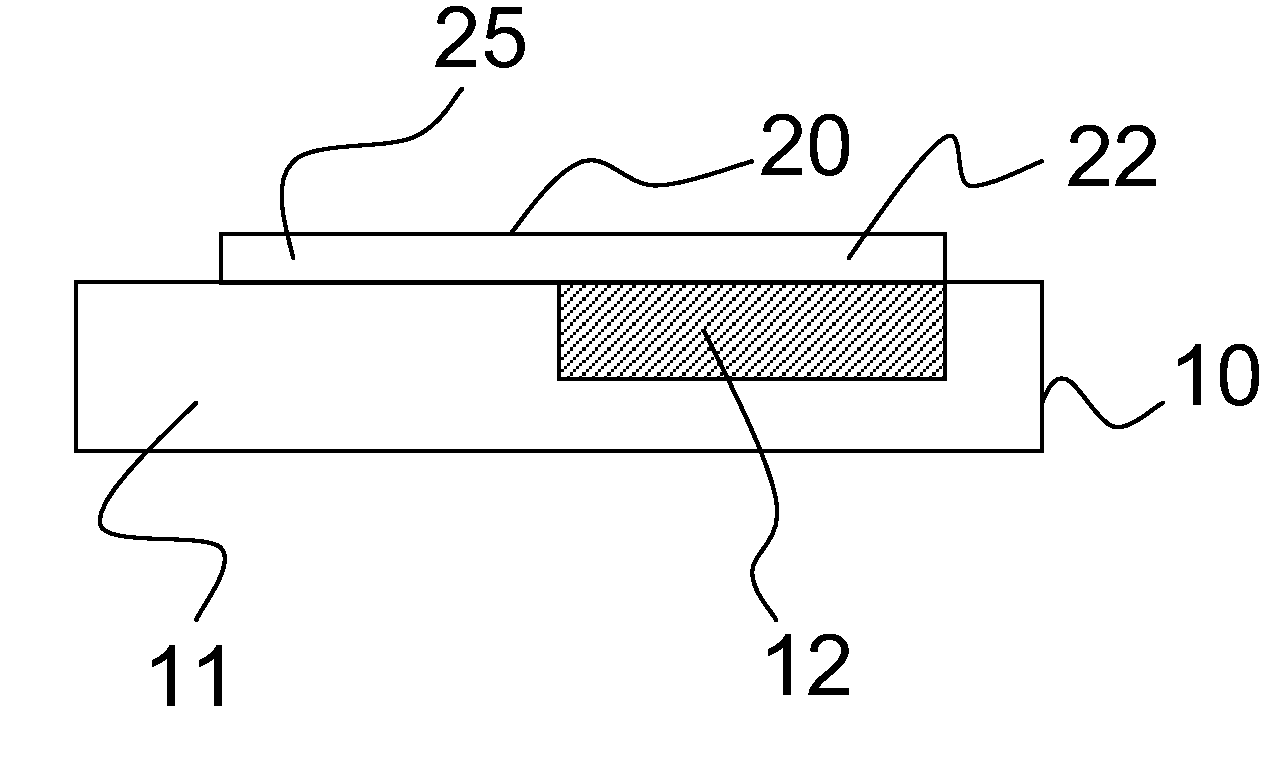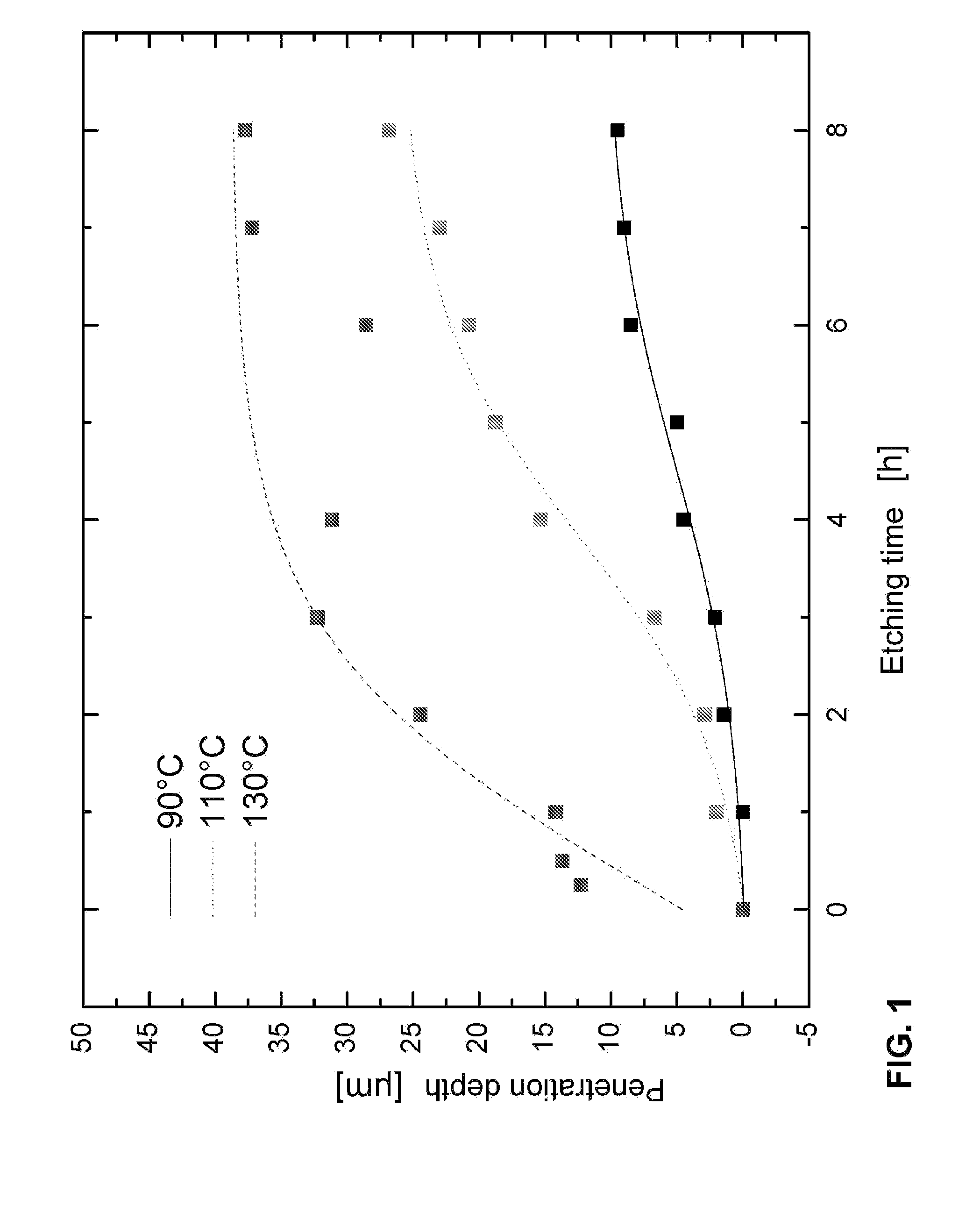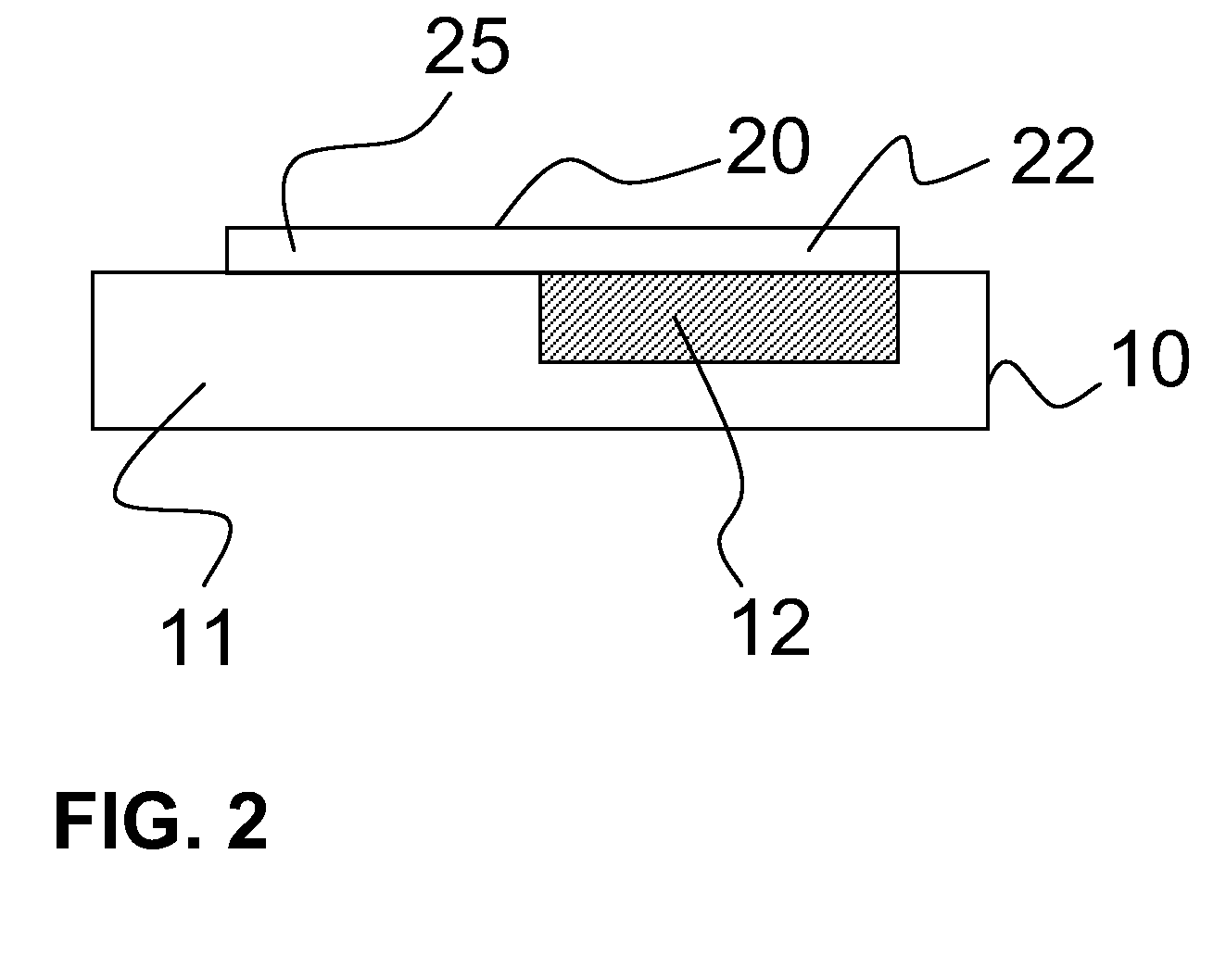Ceramic substrate material, method for the production and use thereof, and antenna or antenna array
a substrate material and ceramic technology, applied in the direction of printed circuit dielectrics, porous dielectrics, decorative arts, etc., can solve the problems of low energy coupled into the material, wasteful consumption, and material described in de 100 43 194 a1 is not suitable for high frequency applications, and achieves a simple and cost-effective method and controllable
- Summary
- Abstract
- Description
- Claims
- Application Information
AI Technical Summary
Benefits of technology
Problems solved by technology
Method used
Image
Examples
examples
[0039]A substrate material having a first layer made of sintered glass ceramic, e.g., an LTCC tape having the composition 30% SiO2, 40% Al2O3, 4% CaO, 9% PbO, 2% B2O3+remainder—known under the product identification DP951, the composition 30% SiO2, 20% Al2O3, 3% CaO, 5% SrO, 17% BaO, 5% ZnO+remainder—known as “Heraeus Tape”—or the composition approximately 50% Al2O3, approximately 15% B2O3, approximately 15% La2O3, +remainder, which is known under the product identification DP943 of Hereaus, is laid in a suitable etching solution (e.g., phosphoric acid for DP951, “Heraeus Tape”, and DP943) at a temperature of 110° C. for the porosification. The porosification procedure may alternatively also be performed using KOH (potassium hydroxide solution) of a concentration of approximately 40% at a temperature in the range of 80° C.
[0040]The curve illustrated in the diagram of FIG. 1 shows the dependence of the penetration depth of the etching solution phosphoric acid into the volume of the g...
PUM
| Property | Measurement | Unit |
|---|---|---|
| Time | aaaaa | aaaaa |
| Structure | aaaaa | aaaaa |
| Volume | aaaaa | aaaaa |
Abstract
Description
Claims
Application Information
 Login to View More
Login to View More - R&D
- Intellectual Property
- Life Sciences
- Materials
- Tech Scout
- Unparalleled Data Quality
- Higher Quality Content
- 60% Fewer Hallucinations
Browse by: Latest US Patents, China's latest patents, Technical Efficacy Thesaurus, Application Domain, Technology Topic, Popular Technical Reports.
© 2025 PatSnap. All rights reserved.Legal|Privacy policy|Modern Slavery Act Transparency Statement|Sitemap|About US| Contact US: help@patsnap.com



